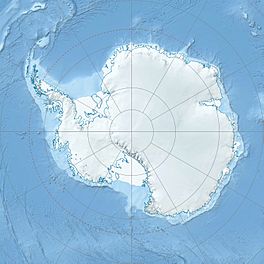Driscoll Glacier facts for kids
Quick facts for kids Driscoll Glacier |
|
|---|---|
| Location | Ellsworth Land |
| Coordinates | 79°42′S 83°00′W / 79.700°S 83.000°W |
| Length | 13 nautical miles (24 km; 15 mi) |
| Thickness | unknown |
| Terminus | Union Glacier |
| Status | unknown |
Driscoll Glacier is a long river of ice, about 24 kilometers (15 miles) long. It's found in a place called the Heritage Range in Antarctica. This glacier flows southeast, moving between two groups of hills, the Collier Hills and the Buchanan Hills, until it joins another glacier called Union Glacier.
Scientists from the United States Geological Survey mapped this glacier using special surveys and photos taken from U.S. Navy airplanes between 1961 and 1966. It was named by a group called the Advisory Committee on Antarctic Names. They named it after Commander Jerome M. Driscoll, who was an officer with a U.S. Navy squadron called VX-6 during an important mission called Operation Deep Freeze in 1965.
Contents
What is a Glacier?
A glacier is a huge mass of ice that moves very slowly over land. Think of it like a very slow-moving river, but made of ice instead of water! Glaciers form in places where snow falls but doesn't completely melt away during the summer. Over many years, the layers of snow build up, get compressed, and turn into thick, dense ice.
How Glaciers Move
Even though they look solid, glaciers are always moving. They slide downhill because of gravity, or they can spread out under their own weight. This movement is very slow, often just a few centimeters or inches a day. As they move, glaciers can carve out valleys and shape the landscape around them.
Where Glaciers are Found
Most glaciers are found in polar regions, like Antarctica and the Arctic, or in high mountains around the world. Antarctica, where Driscoll Glacier is located, is almost entirely covered by a massive ice sheet, which is the largest type of glacier.
Exploring Antarctica
Antarctica is the coldest, windiest, and driest continent on Earth. It's a huge landmass covered by a thick layer of ice. Scientists from many countries study Antarctica to learn about Earth's climate, geology, and unique wildlife.
Why Antarctica is Important
Antarctica plays a big role in Earth's climate system. The huge ice sheet reflects sunlight, helping to keep the planet cool. Studying glaciers like Driscoll Glacier helps scientists understand how ice is changing and what that means for sea levels around the world.


